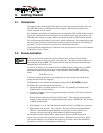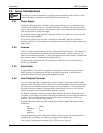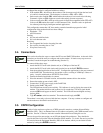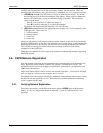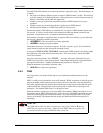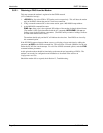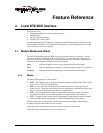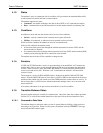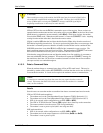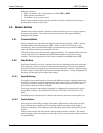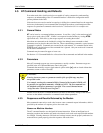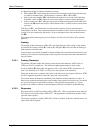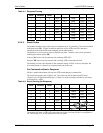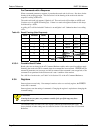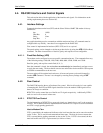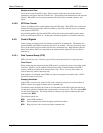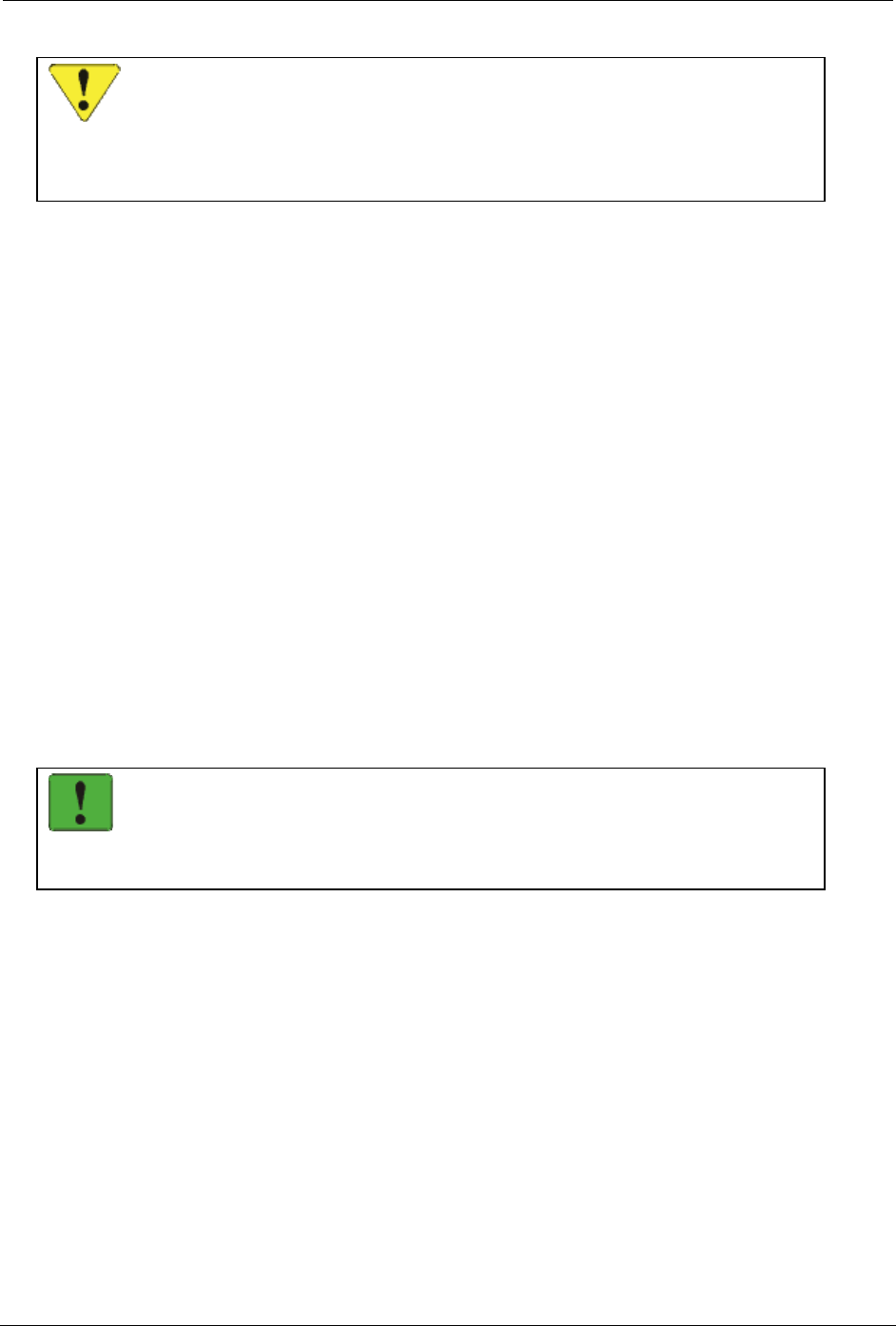
User’s Guide Local DTE/DCE Interface
2110212 Rev 1.0 Page 19
CAUTION
Due to multi-processing in the modem, the DCD signal may be asserted slightly before
the modem has completed the transition to data state. The host device should allow a
delay of 500ms after receiving the CONNECT message and DCD signal before
beginning transmission or there may be some data lost.
Details
UPD and TCP sessions use the D (Dial) command to open a client session. Server sessions are
opened when the modem auto-answers an incoming service request (S0=1) or the local host issues
the A (Answer) command to answer manually (when S0=0). With server sessions, the modem
first sends the RING result. When the modem answers, it issues the CONNECT result. Anything
coming from the modem after that is data from the remote station.
If Quiet is enabled (Q1) then the local host should allow the 500ms delay from the assertion of
DCD before beginning transmissions. For server sessions using Quiet, there are no messages from
the modem’s command processor; therefore all traffic from the modem can be considered data.
SLIP/PPP connections issue either D (Dial) or O (On-line) commands to open a session. The
host’s stack then manages client and server activities. The modem issues CONNECT and asserts
DCD for the transition to data state, just as it would for UDP and TCP sessions.
If the host has escaped from data state and kept the modem in on-line condition, it can return to
data state with the O (On-line) command. The modem will repeat the CONNECT message for
the transition to data state. DCD will have remained asserted to indicate that on-line condition
(the open session) was retained throughout.
4.1.5.2. Data to Command State
When the modem changes to command state, there will be an OK result issued. This may be
preceded by another result (such as NO CARRIER) to indicate that the session was closed by an
event outside the modem. A closed session requires the modem to return to command state.
NOTE
A transition to command state from data state does not require that the session be
closed. This means that DCD will remain asserted while the modem is in command
state, on-line condition.
Details
Several events can cause the modem to transition from data to command state based on mode.
UDP and TCP PAD mode transitions:
• The modem receives the Time Dependent Escape Sequence (TDES) (Section 6.6.3.1)
• The modem receives the Time Independent Escape Sequence (TIES) (Section 6.6.3.2)
• DTR is de-asserted, with a configuration to use DTR (&D1 or &D2).
• The UDP or TCP PAD Session Timeout (S30) expires due to inactivity on the connection.
• The remote terminal closes the session (TCP closing handshake).
• The modem is reset or power-cycled (and is not using auto-dial).
SLIP mode transitions:
• DTR is de-asserted, with a configuration to use DTR (&D1 or &D2).
• The modem receives the escape sequence as a SLIP frame (0xC0 +++ 0xC0)
• The modem is reset or power-cycled.



